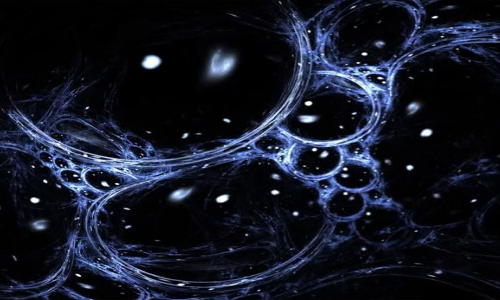Live
- PM praises city-based NGO for promoting libraries
- Odisha police rescue ‘trafficked’ Bangla girl
- iPhone 16 Plus Now at Rs. 2,000 Discount on Amazon – Get It Today
- How Technology is Shaping Global Connectivity and Enhancing Security
- Dy CM directs officials to collect all critical info on caste census
- Naga Chaitanya Opens Up About His Wedding Plans with Sobhita Dhulipala
- ‘NC24’ First Look Poster: Naga Chaitanya’s Next Promises Thrills and Mythology
- Rumors Heat Up as Vijay and Rashmika Enjoy a Cozy Meal Together
- 67th annual day celebrations held at IRISET
- Actor Ali Receives Legal Notice Over Unauthorized Construction at Vikarabad Farmhouse
Just In
Physicists, hunting the Dark Photon, will blast a diamond with antimatter


Almost everything is missing And a team of physicists is trying to find all of it The universe as we know it includes about a tenth of the total stuff thats out there The rest Missing Invisible
Almost everything is missing. And a team of physicists is trying to find all of it. The universe as we know it includes about a tenth of the total stuff that's out there. The rest? Missing. Invisible. Undetectable, except through the effects of its gravity on the fraction of stuff that we can see. Researchers call that missing stuff the dark sector — the class of energetic and massive particles that seemingly must exist out there somewhere but that don't interact with luminous matter (the stuff we're made of, along with everything we can see) in any way we can detect.
There's a new project at the National Institute for Nuclear Physics in Italy that's going to try to unlock all that dark stuff using the theoretical dark photon (the dark-sector version of regular light-carrying photons) as the key. And if they actually find the dark photon, it will provide evidence for the universe's fifth force — which would be huge news in physics. According to a report in The Guardian, Italian researchers plan to bombard a diamond wafer with a beam of antimatter particles called positrons, which are the antimatter versions of electrons. Under normal circumstances, positrons and electrons that smash into each other annihilate each other, producing a pair of regular photons.
But if dark photons really exist, then every once in a while, a positron-electron annihilation should produce one. Instead of the interaction spitting out two regular photons, a dark photon and a regular photon would emerge side by side, The Guardian reported. The researchers told Physics World that they hope that the beam of positrons in their experiment, which they call Padme, will crash into enough electrons in the diamond to produce a dark photon. Padme won't be able to detect that dark photon directly; instead, a missing photon will serve as evidence. A positron-electron annihilation that produces a dark photon will look to Padme like some of its energy just disappeared, because it will have entered the dark sector.
If that happens, the researchers expect to be able to confirm the existence of the dark photon, and measure its mass. (Unlike regular photons, dark photons have mass, according to The Guardian.) That would be evidence of not just a new particle but also an entirely new force. In the luminous universe, there are four forces. Electromagnetism carries light energy and binds atoms to other atoms. (As The Guardian noted, it's the reason you don't fall through your chair.) The strong force holds the particles inside atoms together.
The weak force causes atoms to fall apart and decay. And gravity, the fourth force we can detect, pins you to the Earth and governs the movements of the cosmos. If dark photons exist, The Guardian reported, then they would be the manifestation of a fifth force entirely — one not present in our prevailing model of the universe: dark electromagnetism. If one turns up in Padme (and that's a big if; past hunts for dark photons have turned up nada), then it will really be time to rewrite the physics textbooks.

© 2024 Hyderabad Media House Limited/The Hans India. All rights reserved. Powered by hocalwire.com






